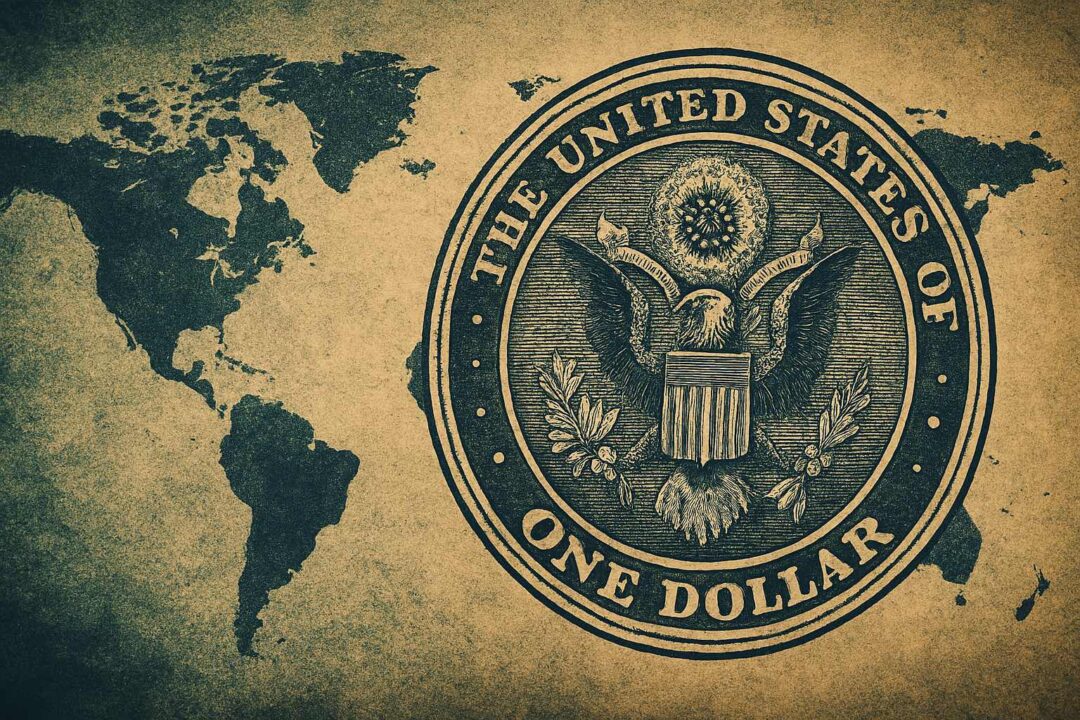The quiet revolution that could perhaps turn the U.S. national debt into a strength — not a weakness.
What if the U.S. could make its $35 trillion national debt work for it — not against it?
What if one of the country’s most powerful economic tools wasn’t legislation, taxation, or interest rate hikes — but a smartphone app?
As headlines warn of fiscal cliffs and unsustainable deficits, a quiet financial revolution is underway — one that could rewrite how the world sees the dollar, the debt, and even the very concept of money itself.
It’s called the stablecoin — and while it may sound like crypto jargon, it could hold the key to America’s next great economic advantage.
Imagine a future where $10 trillion worth of U.S. digital dollars circulates across the globe — used not just for trading tokens, but for day-to-day commerce, global savings, and financial infrastructure in places from Lagos to Jakarta. These aren’t just dollars. They’re U.S. Treasuries in disguise — digital, liquid, and everywhere.
In that future, the question isn’t “How can we pay off the debt?”
It’s “What if the world wants to hold it?”
Let’s dive into how the U.S. can turn stablecoins into a strategic asset — and why this might be the most important financial opportunity of the next decade.
The Rise of the Digital Dollar
Stablecoins like USDC and USDT are digital representations of the U.S. dollar — backed mostly by short-term U.S. Treasuries and available to anyone with a smartphone. Today, they represent around $200 billion in market cap, but that could be just the beginning.
If this market grows to $10 trillion, it would mean that a large portion of the world is holding digital U.S. dollars — effectively, tokenized U.S. government debt. This would create unprecedented, persistent demand for U.S. Treasuries — a massive financial tailwind for the U.S. economy.
Stablecoins = Demand for Treasuries
Here’s the critical point: most dollar stablecoins are backed by short-duration U.S. government debt — like Treasury bills.
So, if the world adopts U.S. stablecoins on a massive scale, it creates a giant, persistent source of demand for U.S. Treasuries. That’s not just good — it’s transformational.
With $10 trillion in stablecoins circulating, the world is essentially voluntarily holding a massive chunk of U.S. debt — as digital cash. That makes the debt more sustainable, cheaper to issue, and less reliant on central banks or foreign governments.
It also shifts global financial power further in favor of the U.S., as dollar dominance becomes programmable and ubiquitous.
Lower Interest Rates and Easier Debt Refinancing
One of the most important side effects of stablecoin-driven demand for U.S. Treasuries is its impact on interest rates. As stablecoin issuers buy more short-term government debt to back their tokens, they become a steady, price-insensitive buyer of Treasuries.
This increased demand puts downward pressure on yields, especially at the short end of the curve (T-bills and short-duration notes). In practical terms, that means the U.S. government can borrow more cheaply — reducing debt servicing costs and improving fiscal flexibility.
Crucially, lower interest rates also make it easier for the U.S. to refinance its existing debt as trillions of dollars in Treasuries mature each year. With rates held in check by stablecoin-driven demand, the rollover of national debt becomes less risky and less expensive — reducing the likelihood of fiscal shocks or budget crises.
Over time, this could act as a natural counterweight to rising interest rates, helping the U.S. maintain low borrowing costs while exporting digital dollars globally.
Debt Size vs. Debt Demand
The U.S. doesn’t get into trouble just because it has a big debt. It gets into trouble when people don’t want to hold that debt anymore.
- If investors demand higher interest rates to buy U.S. Treasuries, servicing the debt gets more expensive.
- If demand falls, the government either prints more money (inflation) or cuts spending (recession risk).
But if stablecoins become a new global reserve asset — held widely across emerging markets, financial platforms, and payment systems — the U.S. enjoys stable, built-in demand for its debt. That makes the $35 trillion debt burden much less alarming.
Would This Cause Inflation?
Maybe, bu not necessarily. In fact, it could help reduce inflation — at least in the short run.
Think of stablecoins like an export of dollars. When someone overseas holds a stablecoin, they’re holding U.S. liquidity — not spending it inside the U.S. That’s deflationary for the domestic economy.
Of course, if the U.S. uses this demand irresponsibly — by overborrowing or overspending — the inflation risk returns. But with smart policy, this could be a powerful monetary stabilizer.
The Strategic Opportunity
The U.S. is already the world’s financial superpower, but it faces growing challenges:
- Rising interest costs on national debt
- Competition from alternative currencies (digital yuan, eurozone CBDCs)
- Risk of losing dollar dominance in global trade
Growing a trusted, regulated, dollar-backed stablecoin ecosystem could be the next big move that secures U.S. leadership for decades.
It would:
- Turn digital finance into a soft power weapon
- Export U.S. monetary policy globally
- Make the U.S. debt more sustainable
- Strengthen dollar hegemony in a multi-polar world
Conclusion: The Dollar’s Digital Destiny
The next phase of American financial strength may not come from raising taxes or cutting spending — but from embracing innovation.
By championing a regulated, global stablecoin system — and growing it from today’s $200 billion to tomorrow’s $10 trillion — the U.S. can transform its liabilities into global demand.
It’s time to see the national debt not just as a burden — but as an asset, waiting for the right infrastructure to unlock its full power.
Bonus: What Happens When Stablecoin Growth Slows?
Of course, no market grows forever. So what happens if — or when — global stablecoin demand eventually plateaus? What if everyone who wants a dollar-backed digital asset already has one?
This scenario doesn’t negate the benefits — but it does shift them. During the growth phase, stablecoins provide fresh, ongoing demand for U.S. Treasuries. But once the market saturates, that demand becomes stable rather than increasing.
In that case, the U.S. still wins — it now has a locked-in global base of foreign-held debt that is:
- Widely distributed and harder to unwind quickly
- Digitally native and easy to manage
- Held by users who are incentivized to keep using it for payments and savings
Even if net growth slows, the infrastructure remains in place. A $10 trillion base of tokenized Treasuries would continue to support liquidity, reduce volatility, and offer the U.S. a soft power advantage in global finance.
That said, this also puts pressure on U.S. policymakers to maintain trust. If fiscal discipline or political dysfunction erodes confidence in the backing of stablecoins, users could diversify into alternatives — a digital euro, CBDCs, or commodity-backed tokens.
Bottom line: The stablecoin phase may eventually mature, but the strategic gains — if secured now — will continue to pay dividends for decades. It’s about building the pipes while the world still wants to connect to them.
And after all: who’s to say US-Treasury backed Stablecoins have to always and forever even be backed by treasuries 1:1? Maybe they actually don’t!
Discover more from Brin Wilson...
Subscribe to get the latest posts sent to your email.



